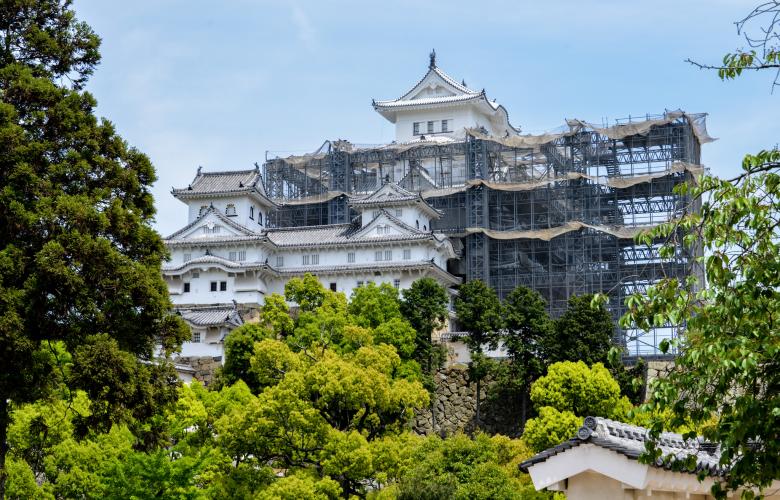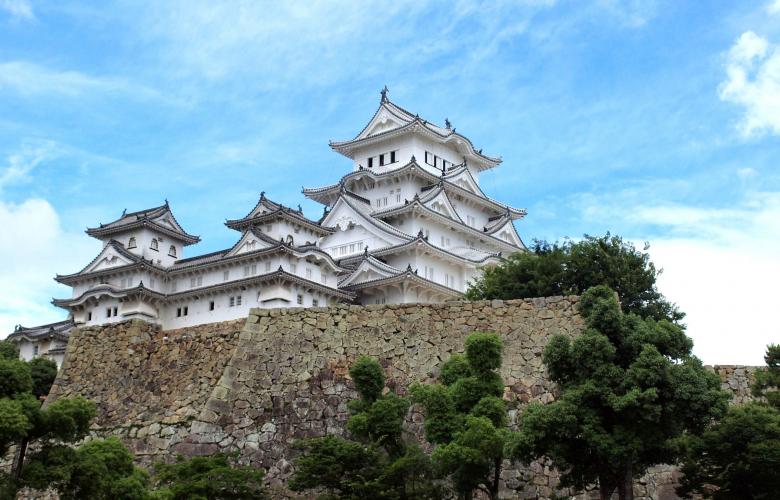Visitors travelling to see Japan’s greatest temples and shrines will occasionally be disappointed to find their destination shrouded in scaffolding and white screens, known as suyane (素屋根). Often lasting years, the careful restoration of ancient buildings in Japan is a lengthy process requiring traditional craftspeople and minimal use of modern technology. While Japan has plenty of buildings and locations listed under varying levels of cultural recognition, the skills required to maintain them are also highly valued.
Known as the Selected Conservation Techniques, Japan has over 50 skills recognised as being culturally important. Related to both tangible and intangible Important Cultural Properties (some UNESCO recognised, some on a local or national level), the skills range from the creation of tatami mats to hairstyling techniques for kabuki theatre.
Enshrined in law from 1975 as an addition to the existing Law for the Protection of Cultural Properties introduced in 1950, it aims to support those continuing traditional skills and crafts. Providing grants and support to train new apprentices, the law ensures ancient skills will not be lost.
With over 4,800 Important Cultural Properties including 280 National Treasures and 16 World Heritage List locations, Japan’s architecture forms a large part of the conservation efforts. The protected skills offer an insight into some of the most recognisable element of traditional architecture as well as some of the unseen but vital pieces.
Covering the smallest decorative elements to the often unnoticed structural crafts and everything in between, the skills are visible in most traditional buildings. Externally, skills including thatching as well as simple roof tiles and the decorative onigawara examples depicting ogres or beasts are used for roofs.
With over 90% of Japan’s cultural properties made of wood, the inclusion of a variety of carpentry skills is no surprise, along with the Kyo-kabe plastering craft, which combines support ropes or bamboo sticks with plastering to create strong walls. On a smaller scale, skills relating to decorative lacquer and metal work are supported. Skills required for making tatami mats and sliding doors are also included — offering some of the most recognisable examples.
The Japanese Association for Conservation of Architectural Monuments maintains the records and studies of renovated buildings throughout Japan. Detailing the complex process of inspection, consultation, dismantling, repair and reassembly, the years-long process becomes more understandable.
One of Japan’s very first UNESCO World Heritage Sites, Himeji Castle is a symbol of Japan and one of their top three castles, known as the White Heron. Attracting millions of visitors each year, the castle’s five-year closure for repairs in 2010 was a blow to many, although some work was visible to guests. Having last undergone serious repair in 1956 and not opening again until 1964, the castle’s image was fast becoming a shadow of its former impressive self.
The Heisei-era work combined a great many of the protected skills and the grand reveal in May 2015 was a stunning example of the efforts paying off. Requiring a large scaffold complete with white coverings known as suyane, the temporary structure protected the exposed building as well as providing support for the work being carried out. All 80,000 roof tiles were removed, with 80% being cleaned and returned, while around 16,000 were replaced entirely. Exterior walls made using rope coated in mud and plaster were repaired and replaced, with replastering for a clean finish. Structurally, pillars, beams and floors were dissected and reinforced, increasing seismic capacity.
A strong example of the combination of modern and traditional skills — the earthquake reinforcement elements of restoration are often a key focuses given Japan’s frequent tremors. Having survived the Great Hanshin Earthquake without a drop of sake spilling from the top-floor’s altar bottle (or so legend has it), the efforts of Himeji Castle's previous restoration were long-admired. The more recent efforts include metal supports and involve using modern structural testing technology alongside traditional techniques.
Reopened relatively recently, the castle remains a stunning example of not only traditional Japanese architecture, but also of the skills and dedication required to maintain it for future generations.
By Lily Crossley-Baxter
Similar to this:
How to flip a Japanese home
Japanese traditions for sustainable building
Before you build: Groundbreaking ceremonies in Japan






